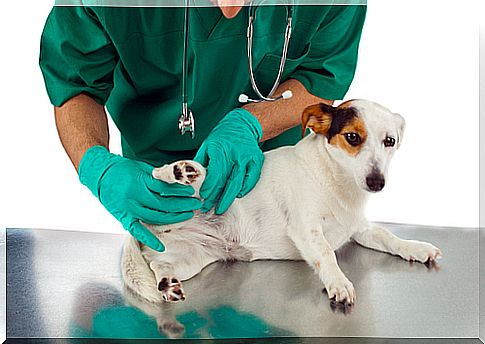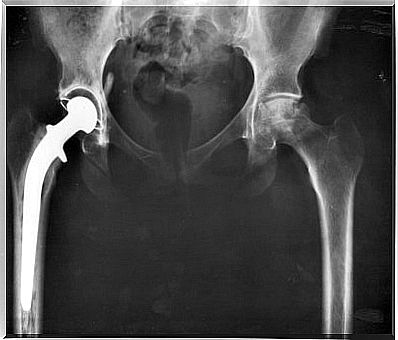Hip Dislocation In Dogs: Prevention And Common Cases

Hip dislocation, also called hip dislocation, is one of the most common injuries in both cats and dogs. In the following lines we will learn a little more about its causes, prevention and treatment in order to ensure the well-being of our pet.
What is a hip dislocation and what are its main causes?
This injury occurs with the dislocation of the animal’s hip joint. It is produced by a deviation of the head of the femur, which comes out of the concave part of the joint, also called the acetabulum. Its origin is eminently traumatic, and usually occurs around 11 or 12 months of life of the animal.
The poodle or the German shepherd have a greater predisposition to suffer this injury. It is common in large and medium-sized dogs, since they usually suffer from hip dysplasia previously, which makes them perfect candidates to suffer a dislocation.

Hip dysplasia is defined as poor congruence of the femoral heads with the concave part of the joint. This causes inflammation, pain and stress to the animal and can weaken both the joint and the surrounding tissues. Often a dislocation due to the weakness of these tissues occurs.
Symptoms and diagnosis
Hip dislocation is a painful injury that affects the mobility of the legs and the balance of the dog. The legs of an animal that suffers from it are usually folded inwards or outwards, so it depends on the type of dislocation that presents. In the most common, the femoral head is displaced outward.
Derivative injuries to the surrounding tissues are common in hip dislocation. Therefore, it is urgent that we take our pet to a veterinarian to undergo both a general evaluation and an orthopedic one.

According to the American Veterinary Surgical College, the most common diagnostic tests to detect and diagnose potential injuries are as follows:
- Blood tests. They can help us to know the state of the animal’s organs and the presence of infections, in the event that our pet has an open wound due to trauma.
- X-rays of the hip to examine the angle of dislocation and other possible damage to the joint.
- Additional chest, spine, or abdominal X-rays if the dislocation is due to a strong blow.
Treatment of hip dislocation in dogs
- A non-surgical reduction, also called a closed reduction, of the hip joint. This procedure, which will be carried out by the veterinarian applying general anesthesia, should be done three or four days after the injury. This is due to the complications that trauma injuries can cause.
- A surgical reduction that will treat damaged tissues and provide additional support to the joint through implants. We are facing a more invasive technique that entails a postoperative period, something common in surgical procedures.
- Osteotomy of the femoral head. It involves the removal of the femoral head to give rise to a ‘false’ joint, due to the impossibility of treating the injury using more conservative techniques. There is a certain loss of mobility in the animal, but the risk of suffering a hip dislocation is completely eliminated. Regular physical therapy sessions are recommended to improve mobility as much as possible.
- Total hip replacement. The natural joint is replaced by a mold made with synthetic materials.









